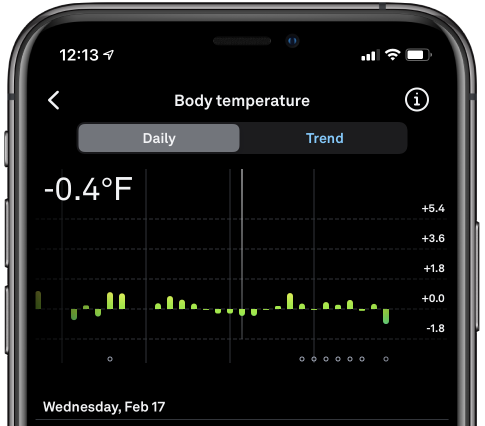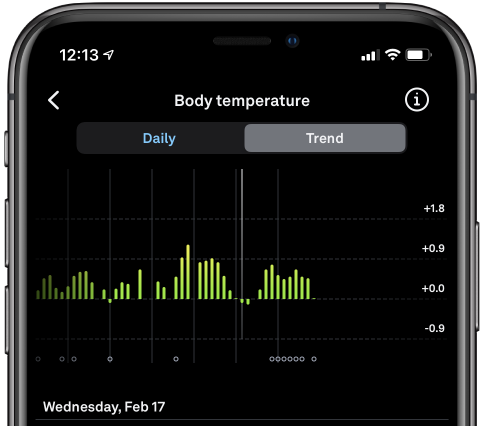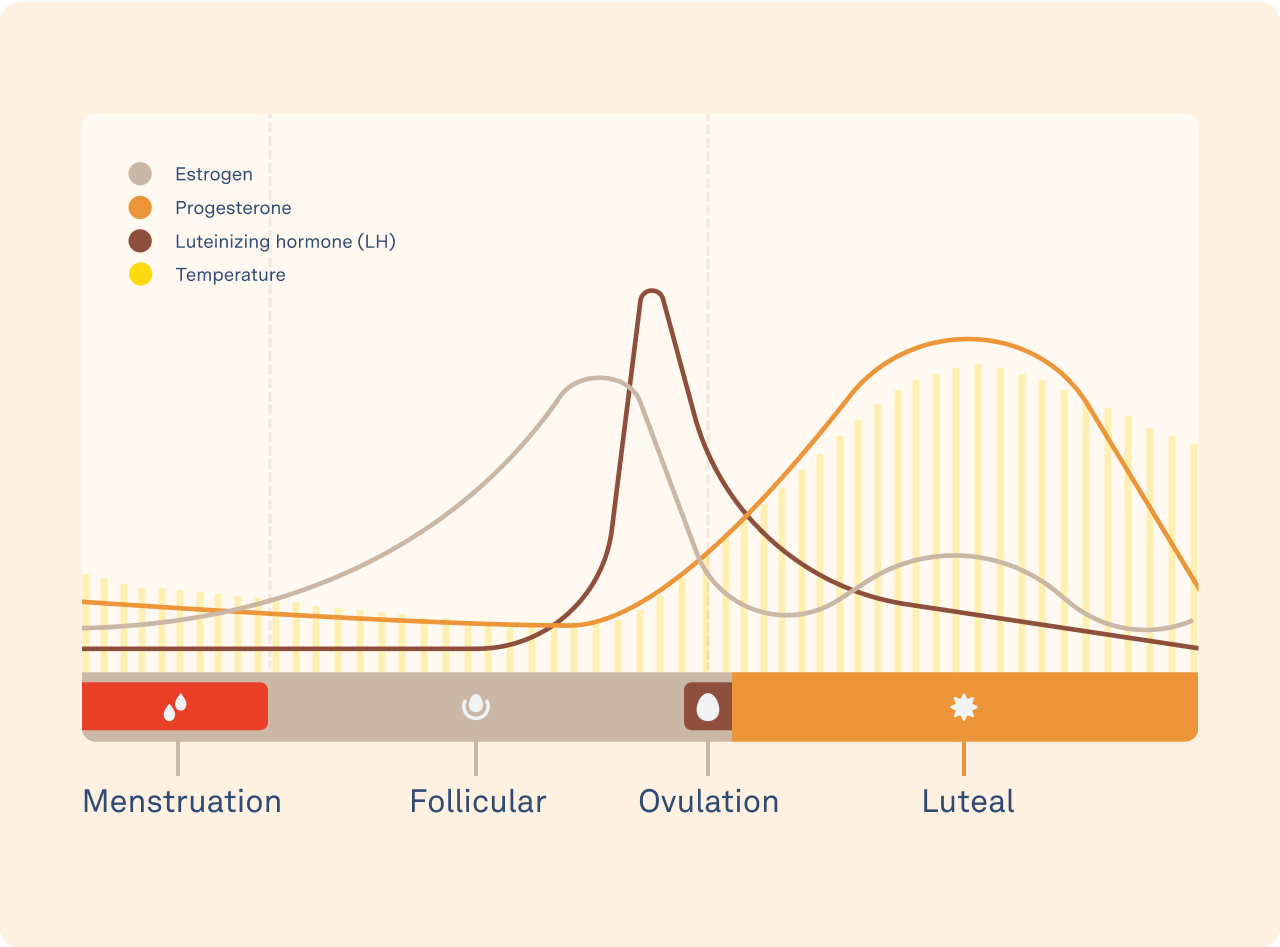Your body’s ability to maintain your ideal temperature range can indicate whether your system is taxed and needs rest or is ready to face the day.
To find your temperature trend reading from last night, go to the Readiness tab and tap „Body Temperature.“
How Does Oura Measure Your Temperature Trends?
Oura measures your temperature trends by measuring your skin temperature instead, which shows much more variation, making it a key indicator of what influences your health. Oura prioritizes accuracy by reading your temperature directly from your finger.
To provide you with meaningful insights, Oura reports your temperature trends exclusively from your average nighttime temperature. Temperature trends are a highly sensitive measure, and many daytime habits can influence your readings. Measuring at night is the best way to keep conditions stable to reveal your body’s true status.
READ MORE: How Oura Measures Body Temperature
How to Interpret Your Temperature Trends
Oura measures your temperature trends to help analyze your recovery. If your skin temperature is clearly outside of your normal range (e.g., due to illness), you will see a lower than average Readiness Score.
The Readiness tab displays your previous night’s average temperature trend relative to your baseline (e.g., it was +0.3 or -0.2 compared to your average normal temperature).
An individual’s temperature typically changes by about 1 °C (1.8 °F) between its highest and lowest points each day. Anything outside of that range signals that something is challenging your body and preventing it from maintaining your ideal temperature range.
Keep in mind that internal changes (e.g., a fever) or external changes (e.g., a warm bedroom) can both cause temperature changes.
You can view your temperature trends in two different views.
The Daily view focuses on short-term, daily temperature changes. It displays the same body temperature change value you see in your Oura app Readiness tab each day. This view is ideal for spotting when something is starting to tax your body so you can prioritize rest.

The Trend view is optimized for spotting variations in your temperature trends over longer periods (e.g., a prolonged illness or hormonal shifts in a menstrual cycle). Each day displays a value that takes into account the previous three days of data. Rather than weight each date equally, the Trend view values recent days more than days further in the past.

If you’re using the Trends view to manage your menstrual cycle, you may notice:
- temperatures trends are lower during your follicular phase
- temperatures trends are higher during your luteal phase
- spikes in temperature trends after ovulation
- decreases in temperature trends during menstruation
Keep in mind: Hormone cycles are highly individual and you may see different patterns in your temperature trends that are unique to your body. Some cycles are more consistent or vary less than others. Certain types of hormonal birth control may also suppress variation altogether.

RELATED: Understanding the Normal Fluctuations in Body Temperature










